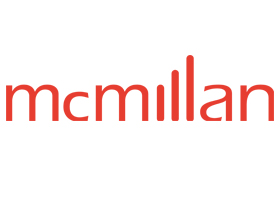


OSC issues proposal on disclosure regarding women on boards and in senior management
OSC issues proposal on disclosure regarding women on boards and in senior management
introduction
On July 30, 2013, the Ontario Securities Commission (OSC) published OSC Staff Consultation Paper 58-401 Disclosure Requirements Regarding Women on Boards and in Senior Management ( Consultation Paper). The OSC states that the purpose behind the Consultation Paper is to advance the representation of women on boards and in senior management.
As noted in the Consultation Paper, the OSC recognizes that corporate decision-making benefits from a diversity of opinions and viewpoints, and that this diversity is enhanced when leadership roles are filled by those individuals who have different professional experience, individual qualities and attributes.
As a result, the OSC is considering amending National Instrument 58-101 Disclosure of Corporate Governance Practices to require that TSX and non-venture issuers provide disclosure on an annual basis on the following four areas:
- Policies regarding the representation of women on the issuer’s board and in senior management;
- Consideration of the representation of women in the issuer’s director selection process;
- Consideration of the representation of women in the issuer’s board evaluation process; and
- Measurement regarding the representation of women in the issuer’s organization and specifically on the board and in senior management.
These types of disclosure are intended to provide investors and other stakeholders with information on the issuer’s approach to advancing the representation of women on boards and in senior management, which in turn may impact investment and voting decisions going forward.
proposed disclosure requirements
Each of the proposed disclosure requirements is described in more detail below.
1. policies regarding the representation of women on the issuer’s board and in senior management
Under this proposed requirement, an issuer would disclose whether such a policy has been adopted and, if it has, the issuer would also provide:
A copy of the policy or a summary thereof;
- An explanation of how the policy is intended to advance the participation of women on the board and in senior management;
- An explanation of how the policy has been implemented;
- Any measurable objectives established under the policy;
- A description of annual and cumulative progress that has been made in terms of achieving the objectives of the policy; and
- A description of how the board or its nominating committee measures the effectiveness of the policy.
Issuers without a policy regarding the representation of women on the board and in senior management will be required to explain why they do not have such a policy and identify any risks or opportunity costs related to the decision not to have such a policy.
2. consideration of the representation of women in the issuer’s director selection process
Currently, an issuer is required to describe the process by which the board identifies new candidates for board nominations. The proposed amendment would require an issuer to explicitly indicate whether, and if so how, the board or its nomination committee considers the level of representation of women on its board in identifying and nominating candidates for its board. If the issuer does not do so, it should explain why not and identify any risks or opportunity costs related to such decision.
3. consideration of the representation of women in the issuer’s board evaluation process
Currently, an issuer must disclose whether its board, its committees and the individual directors are assessed on a regular basis on their effectiveness and contribution. The issuer must describe the process it uses and if such assessments are conducted regularly. If the assessments are not conducted regularly, the issuer must explain how it determines that the board, its committees and the individual directors are performing effectively.
The proposed amendment would require that, if an issuer has a policy regarding the representation of women on the board or in senior management, it disclose whether and how adherence to such policy or achieving the policy’s objectives are assessed in connection with the annual evaluation of the board and the nominating committee.
4. measurement regarding the representation of women in the issuer’s organization and specifically on the board and in senior management
Issuers would be required to disclose the percentage proportion of:
- Female employees in the whole organization;
- Women in senior executive positions; and
- Women on the board.
request for comments
In connection with the proposed changes, the OSC is seeking feedback on the proposed changes, including with regard to the following:
- What are effective policies for increasing the number of women on boards and in senior management?
- What type of disclosure requirements regarding women on boards and in senior management would be most appropriate and useful?
- Are the proposed scope and content of the model disclosure requirements set out in Part 4 of the Consultation Paper appropriate or are there additional and/or different disclosure requirements that should be considered?
- What type of statistics, data and/or accompanying qualitative information regarding the representation of women in their organization should non-venture issuers be required to disclose? Should such disclosure be reported for the non-venture issuer only or for all of its subsidiary entities also?
- What practices should the OSC recommend for facilitating increased representation of women on boards and in senior management?
The comment period ends on September 27, 2013.
by Erica Weiss and Alexis Marach
A Cautionary Note
The foregoing provides only an overview and does not constitute legal advice. Readers are cautioned against making any decisions based on this material alone. Rather, specific legal advice should be obtained.
© McMillan LLP 2013
Insights (5 Posts)View More
Shifting Gears – Canada to Consider New Motor Vehicle Equipment Regulations to Help Prevent Auto Theft
Transport Canada announces plan to update safety standards to combat auto theft.
Budget 2024: Legislative Changes of Note for Investment Funds
In Budget 2024, the Government acknowledges that the restrictions placed on the property that may be held by registered plans have become unduly complex.
Budget 2024: Clean Energy Incentives and Resource Sector Measures
Budget 2024 prioritizes Canada’s transition to a net-zero economy and contains several measures aimed at facilitating that ongoing transition.
Budget 2024: Synthetic Equity Arrangement Restrictions Tightened
Budget 2024 proposes to tighten the “synthetic equity arrangement” anti-avoidance rule by eliminating the no “tax-indifferent investor” exception.
Budget 2024: Increases in the Taxation of Capital Gains
Budget 2024 proposes to significantly change how capital gains are taxed under the Income Tax Act (Canada).
Get updates delivered right to your inbox. You can unsubscribe at any time.




